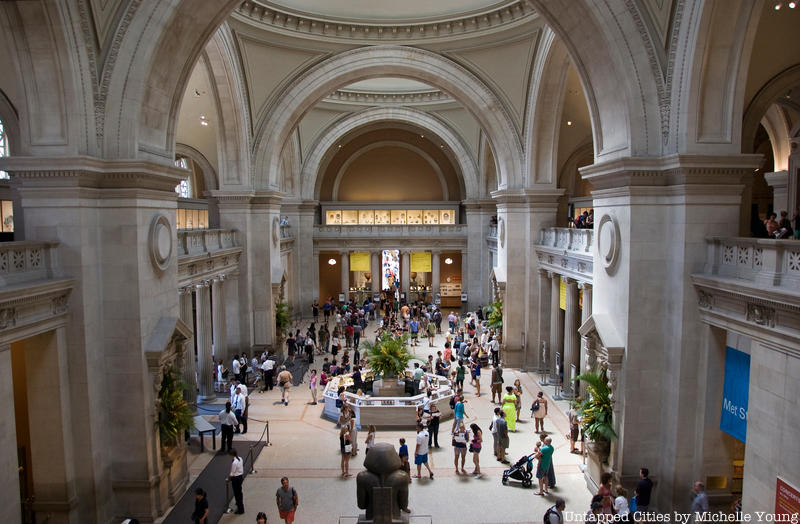3. The Metropolitan Museum of Art

In the late 1800s, New York City reached unheard of levels of power and prestige, but the city lacked a museum worthy of such an important global financial center. The Metropolitan Museum of Art was conceived to fill this void and was meant to rival the Louvre, the British Museum, and the Uffizi Gallery in Florence. The museum was incorporated in 1870 and quickly outgrew its original location in a Fifth Avenue brownstone. The city agreed to fund the museum’s construction, deeded it 18.5 acres in Central Park along Fifth Avenue, and chose Calvert Vaux as the architect. However, it was the subsequent expansion by Richard Morris Hunt that transformed the Met into the architectural landmark it is today.
Trained at the École des Beaux-Arts, Hunt was a trailblazing architect who earned the nickname “the dean of American architecture.” His design for the Met drew inspiration from Greek and Roman classicism, specifically the Baths of Caracalla in Rome. He hired the Guastavino Company to construct the domes in the Italian Renaissance style and commissioned Karl Bitter to create 31 pieces of sculpture for the façade, which were never finished due to budget cuts. Still, the building is a masterpiece of Neoclassical architecture and a symbol of New York City.





